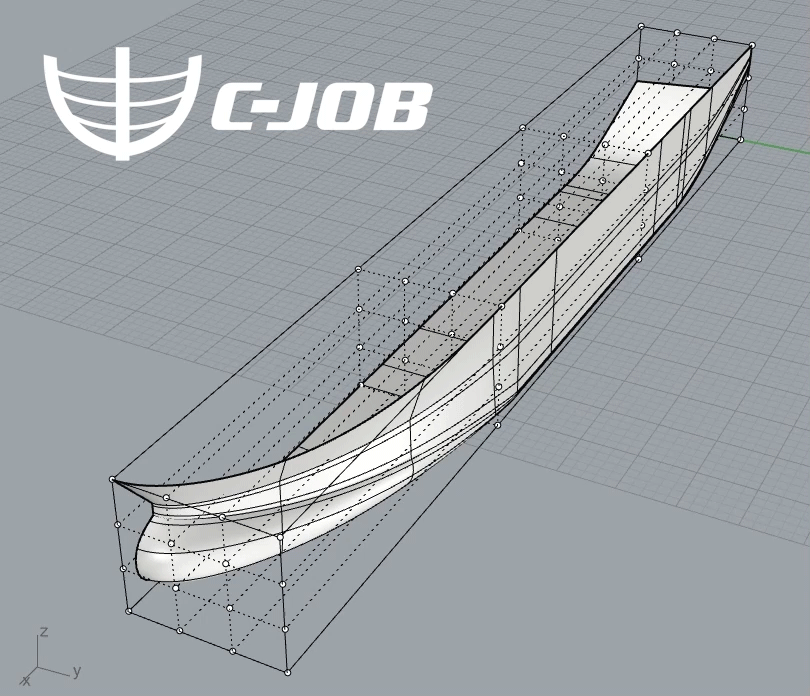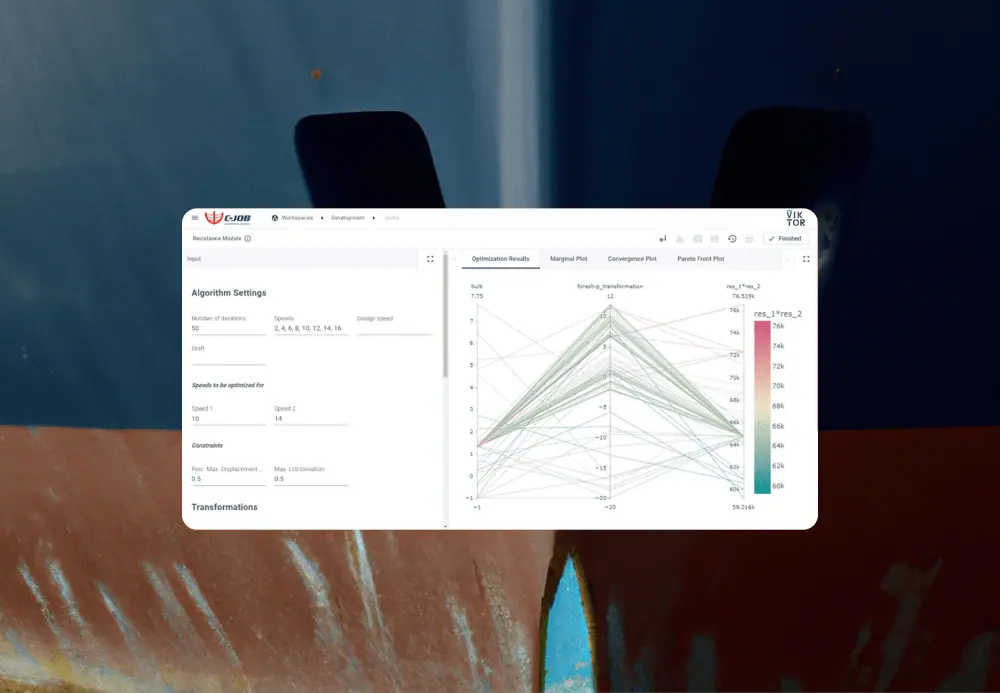The past two years, C-Job and VIKTOR, the leading application development platform for engineers, have collaborated on an R&D project to create a tool that accelerates the ship design process, making it up two times faster.
In the early phases of a design, engineers are forced to make decisions that can have an irreversible impact on later design stages. Due to limited time and data, these design decisions are never optimal. This leads, for example, to ships with higher building and operational costs than actually needed. Especially with regard to current sustainability ambitions and economic conditions, this problem has become more and more relevant to date.
“That is why it’s important to find a way to make these decisions in a data-driven way,” says Roy de Winter, R&D Engineer at C-Job Naval Architects. “An optimization process is difficult and labor-intensive but very essential to ensure reliable and efficient results. Together with the VIKTOR platform, we were able to create a tool , the ACD resistance module, that automates this process and reduces building and operational costs.”
With the ACD resistance module, a ship’s hull is optimized based on its resistance, which in turn will result in superior building costs (CAPEX) and operational costs (OPEX) for ship owners. Together, this creates a ship design that ensures the delivery of the highest design quality in the shortest amount of time: up to two times faster than before. With the tool, chances of having to make any changes later in the process based on key decisions made earlier in the design are reduced to almost zero, resulting in an overall smoother process of the whole ship design.
VIKTOR and C-Job were a perfect match for the creation of this tool. With the ship design company’s experience in R&D, data science, and coding, C-Job knew exactly what input was needed. As a software company with engineering DNA, VIKTOR helped bring C-Job’s vision to life with their team of developing engineers that offer expertise and co-development throughout the process of turning the idea into a usable tool with Python.

Roy continues “Working together with VIKTOR, we were able to build an easy-to-use tool that combines all our knowledge into a one-stop cloud-based solution for our engineers. The creation of the tool could not have happened without VIKTOR, they were essential to making the ACD Resistance Module what it is today.”
Wouter Riedijk, CEO and co-founder of VIKTOR, says “We strive to never stop exploring new ideas and technologies and were excited to collaborate with C-Job on a solution that helps unlock engineering potential to an exponential degree. Through the VIKTOR interface, engineers can turn any idea into a cloud-based, interactive, user-friendly, that is accessible to anyone.”
The ACD Resistance Module continues to build on one of C-Job’s earlier projects, which is the accelerated concept design framework. This framework uses simulation software in combination with in-house developed algorithms to generate optimized concept designs. The ACD Resistance Module uses the latest algorithms created by C-Job. Roy de Winter explains “Multiple algorithms were created and then added to C-Job’s ‘toolbox’ of optimization algorithms. These algorithms allow for complex design problems to be optimized in significantly less time.”
The ACD Resistance Module operates via the VIKTOR platform which offers a user-friendly interface where multiple users can work on projects. VIKTOR takes care of the UI, while C-Job’s domain knowledge is running behind the scenes.












